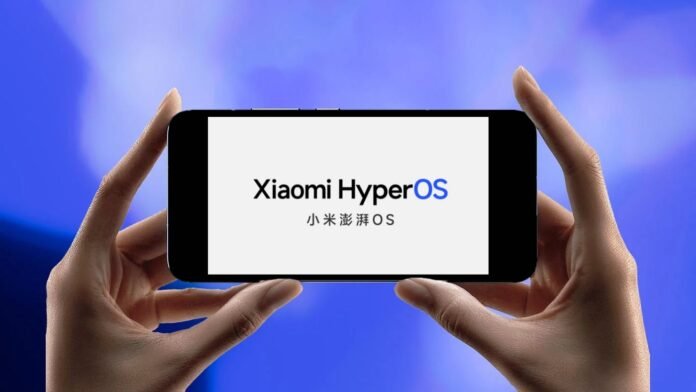
New Delhi: Xiaomi, one of the leading smartphone makers in the world, has unveiled a new operating system for its devices, called HyperOS. The new OS is designed to replace the existing MIUI software, which has been the default interface for Xiaomi users for over a decade. HyperOS aims to provide a seamless and unified experience across all Xiaomi devices, including smartphones, tablets, laptops, smart TVs, and IoT products. HyperOS also offers various features and enhancements that cater to the needs and preferences of modern users.
HyperOS features and benefits
HyperOS is a “human-centric” OS, which means that it focuses on the user’s convenience, comfort, and satisfaction. Some of the key features and benefits of HyperOS are:
- Performance: HyperOS promises to deliver fast and smooth performance, with faster boot times, smoother animations, and better background app retention. HyperOS also optimizes the battery life and memory usage of the devices, ensuring longer and more efficient usage.
- AI integration: HyperOS leverages artificial intelligence to provide various services and functions, such as speech generation, image search, artwork creation, and more. HyperOS also uses AI to learn from the user’s behavior and preferences and provide personalized recommendations and suggestions.
- Connectivity: HyperOS enables cross-device connectivity, which allows users to easily switch and continue tasks across different platforms, such as smartphones, tablets, laptops, and smart TVs. HyperOS also allows users to receive calls on alternate devices, use the smartphone’s rear camera as a laptop webcam, share mobile data, and more.
- Privacy and security: HyperOS ensures the user’s privacy and security, with open-source components, advanced encryption, and granular permission management. HyperOS also features the Knox Vault chipset, which physically isolates and stores the user’s sensitive data, such as PINs, passwords, biometrics, and security keys, in a secure memory.
- User interface: HyperOS has a revamped user interface, which adopts an iOS-inspired lock screen, customizable widgets, a Dynamic-Island-like notification system, and an enhanced Quick Settings menu. HyperOS also has a contemporary design language, which gives a sleek and elegant look to the devices.
HyperOS availability and compatibility
HyperOS was first launched in China, along with the Xiaomi 14 series smartphones, in October 2023. HyperOS is expected to roll out to other markets, including India, in the first quarter of 2024. HyperOS will be available as an over-the-air (OTA) update for the eligible devices, but the rollout will be gradual and not simultaneous for all users.
The following table shows the list of devices that are compatible with HyperOS, as announced by Xiaomi:
| Device | Category | Availability |
|---|---|---|
| Xiaomi 14 Ultra | Smartphone | Pre-installed |
| Xiaomi 14 Pro | Smartphone | Pre-installed |
| Xiaomi 14 | Smartphone | Pre-installed |
| Xiaomi 13 Ultra | Smartphone | Q1 2024 |
| Xiaomi 13 Pro | Smartphone | Q1 2024 |
| Xiaomi 13 | Smartphone | Q1 2024 |
| Xiaomi 13T Pro | Smartphone | Q1 2024 |
| Xiaomi 13T | Smartphone | Q1 2024 |
| Xiaomi 12S Ultra | Smartphone | Q1 2024 |
| Xiaomi 12S Pro | Smartphone | Q1 2024 |
| Xiaomi 12S | Smartphone | Q1 2024 |
| Xiaomi 12 Pro | Smartphone | Q1 2024 |
| Xiaomi 12 Pro Dimensity Edition | Smartphone | Q1 2024 |
| Xiaomi 12 | Smartphone | Q1 2024 |
| Redmi Note 12 | Smartphone | Q1 2024 |
| Redmi Note 12S | Smartphone | Q1 2024 |
| Redmi K50 Ultra | Smartphone | Q1 2024 |
| Redmi K50 Gaming Edition | Smartphone | Q1 2024 |
| Redmi K50 Pro | Smartphone | Q1 2024 |
| Redmi K50 | Smartphone | Q1 2024 |
| Poco F5 | Smartphone | Q1 2024 |
| Xiaomi Pad 6 | Tablet | Q1 2024 |
| Xiaomi Pad 5 Pro 12.4 | Tablet | Q1 2024 |

HyperOS is expected to expand its compatibility to more devices in the future, as Xiaomi continues to develop and improve its new operating system. HyperOS is also expected to integrate with other Xiaomi products, such as smart TVs, laptops, and IoT devices, to create a comprehensive and cohesive ecosystem.



















































